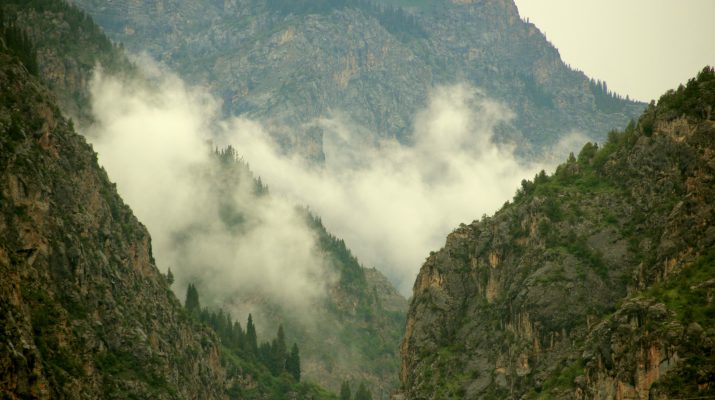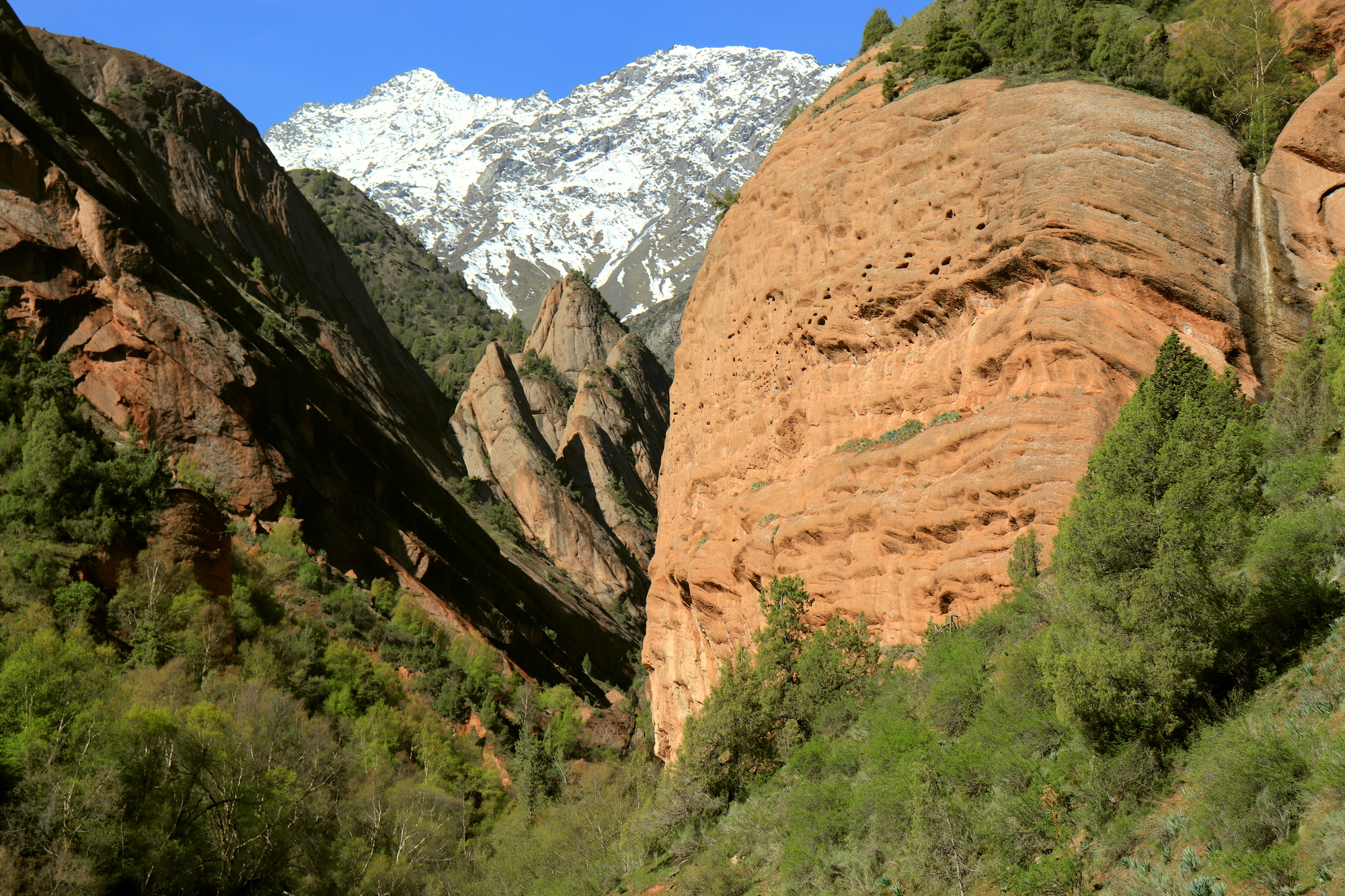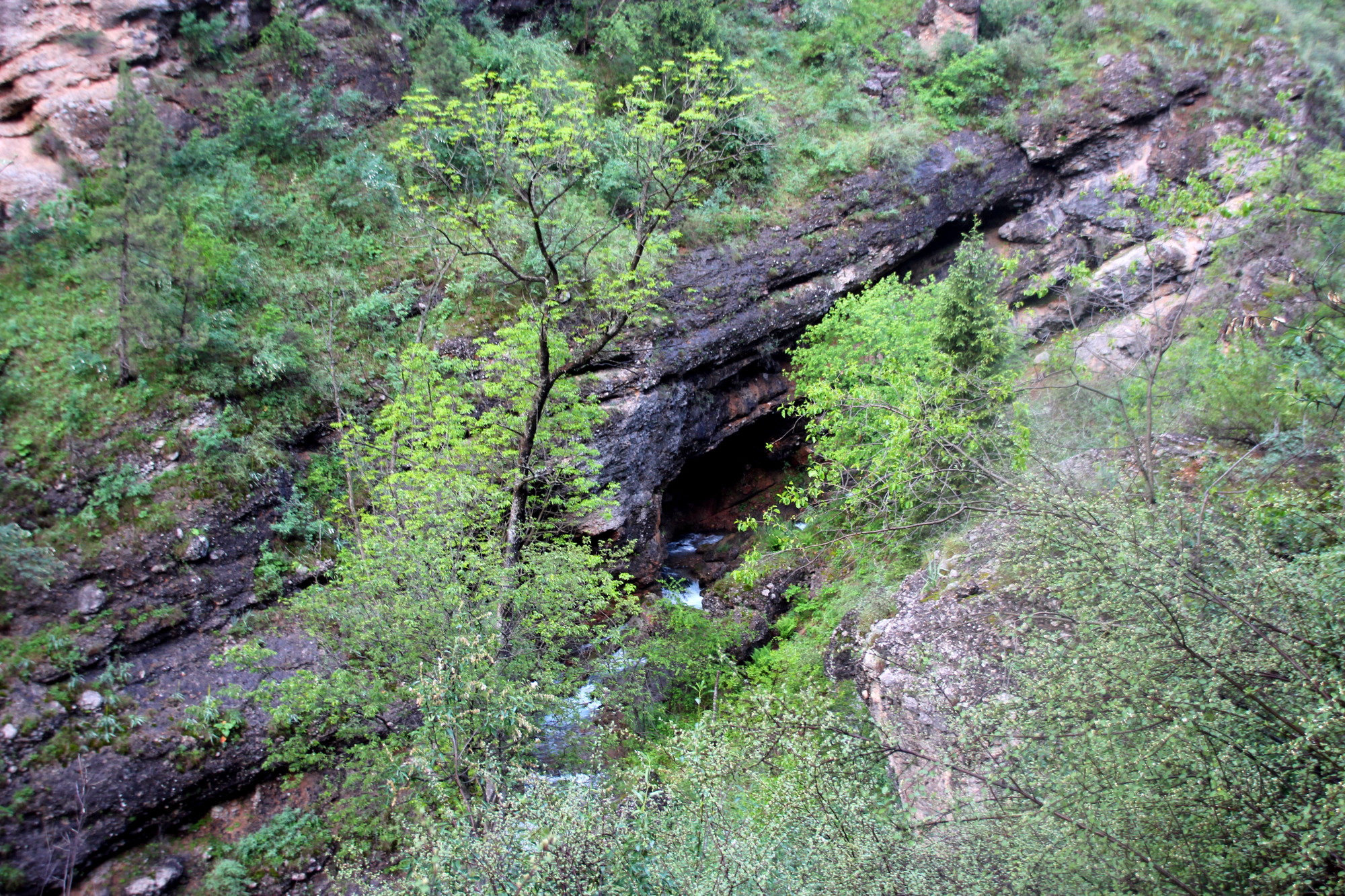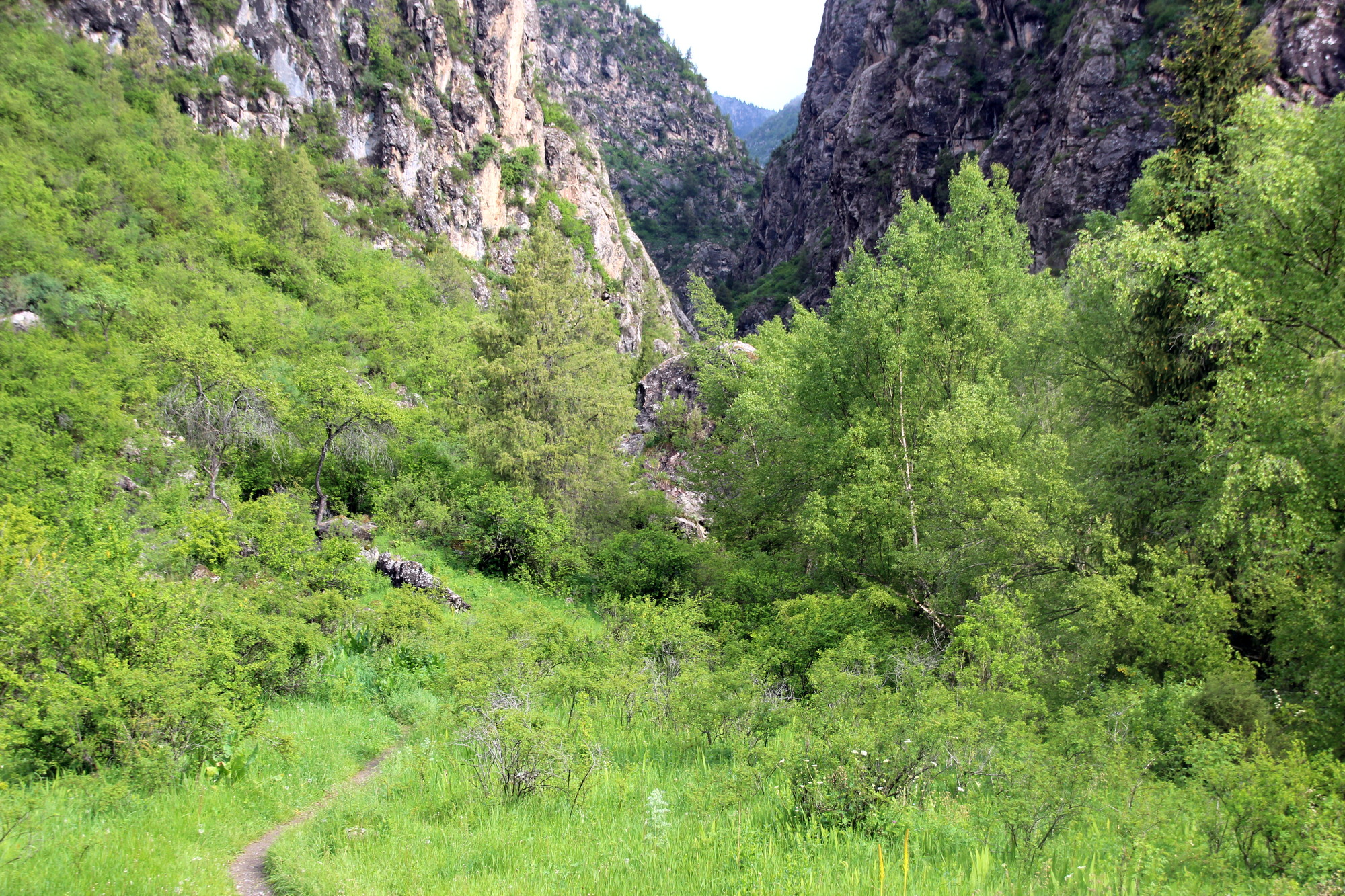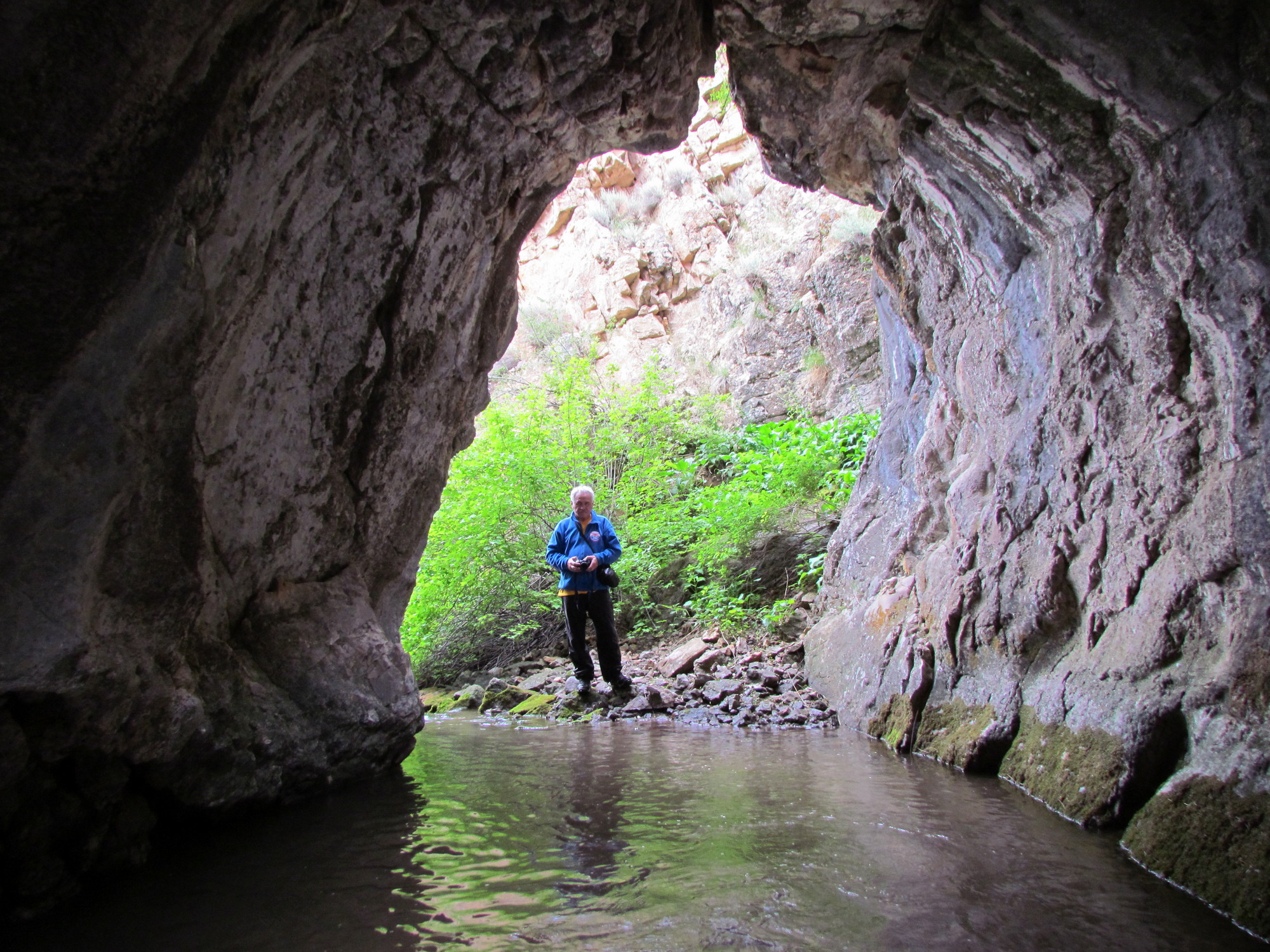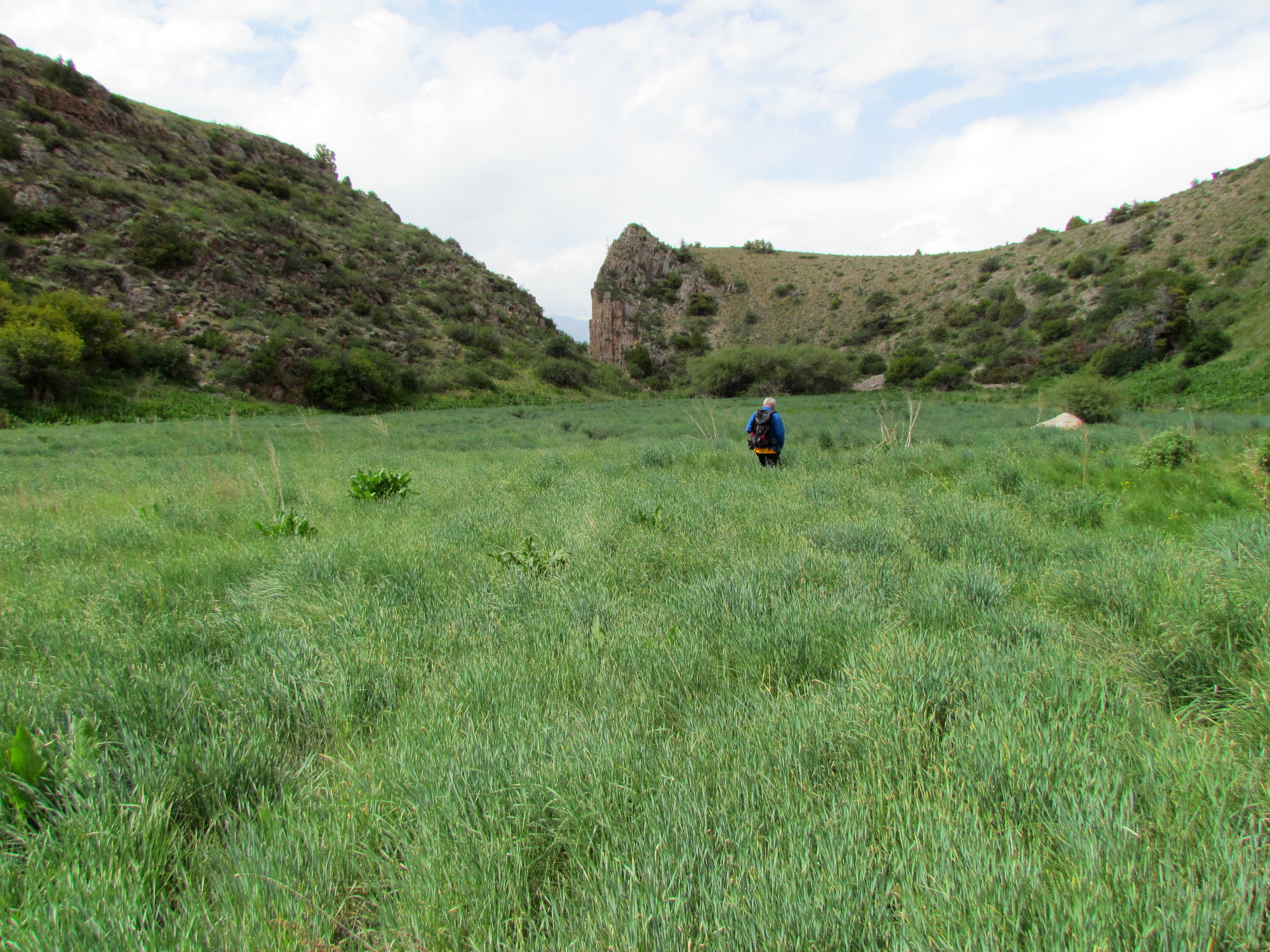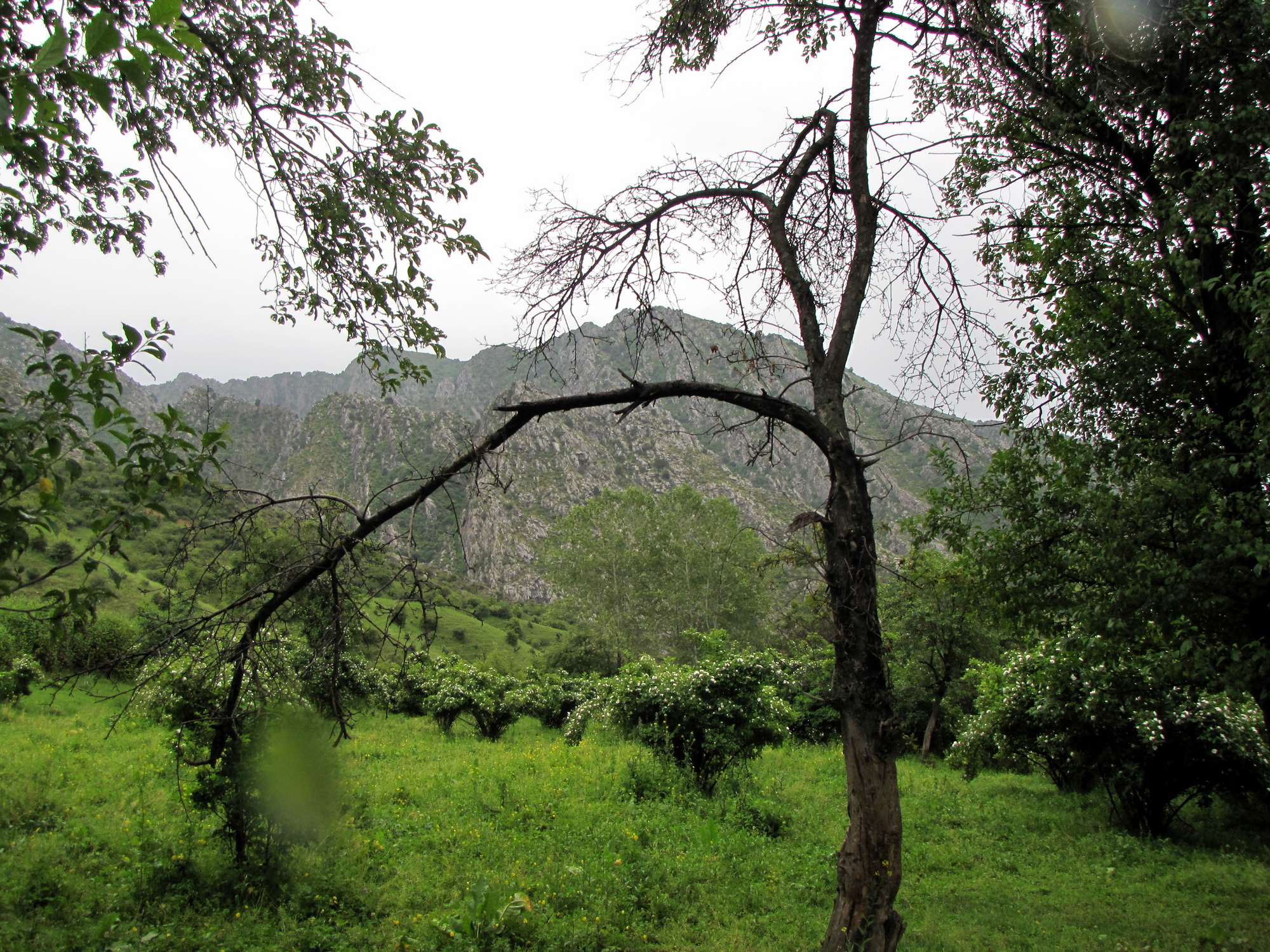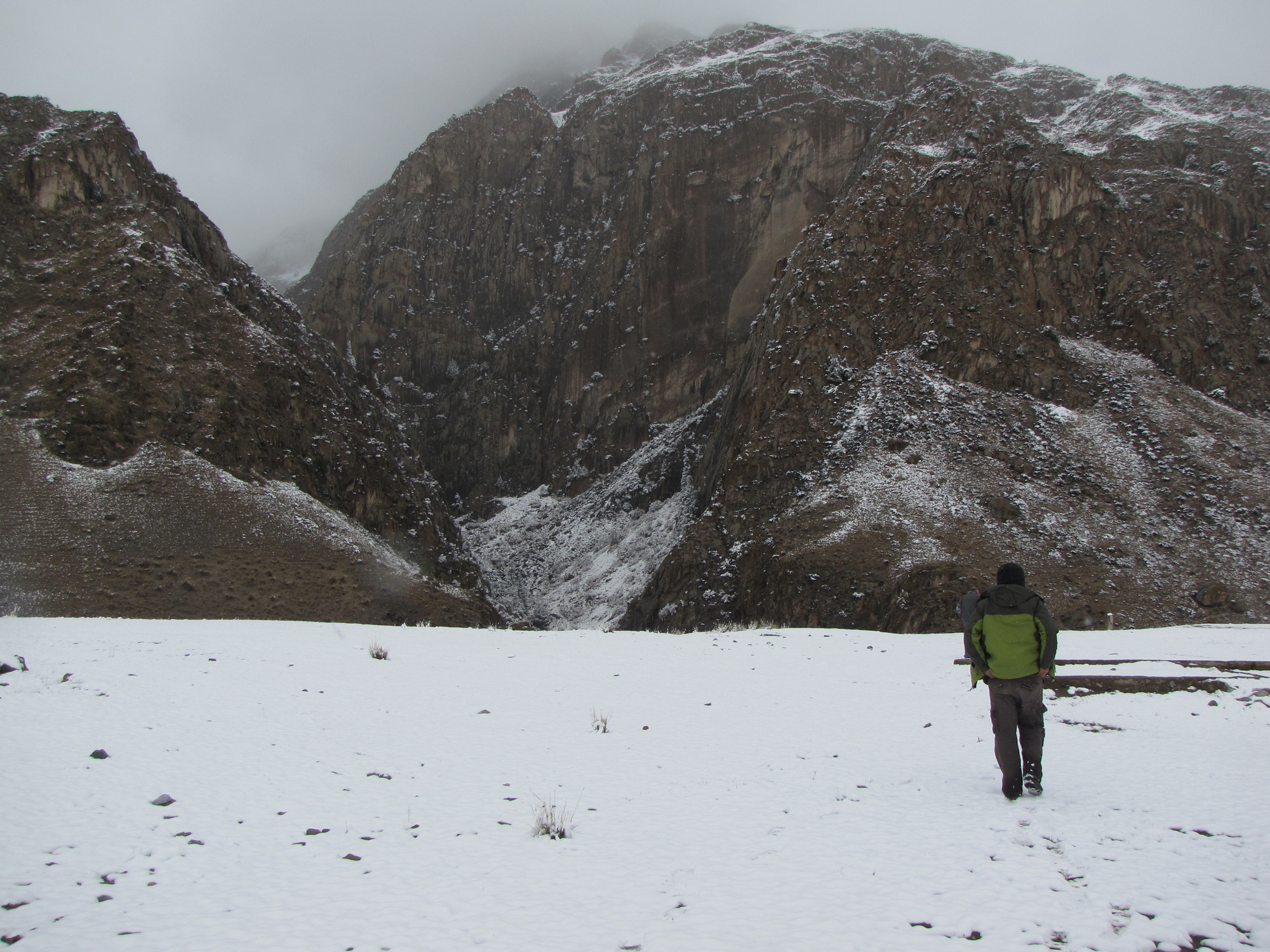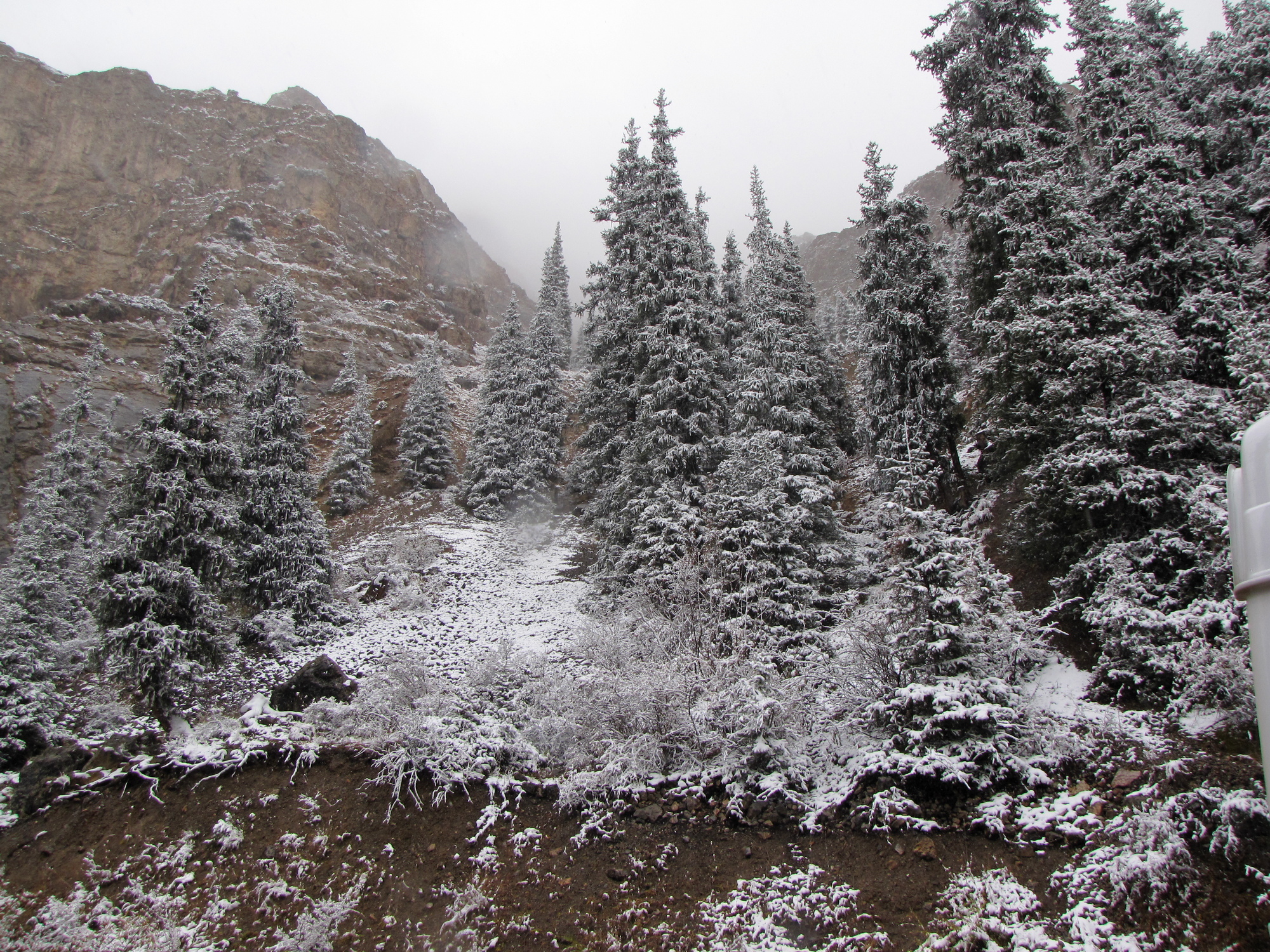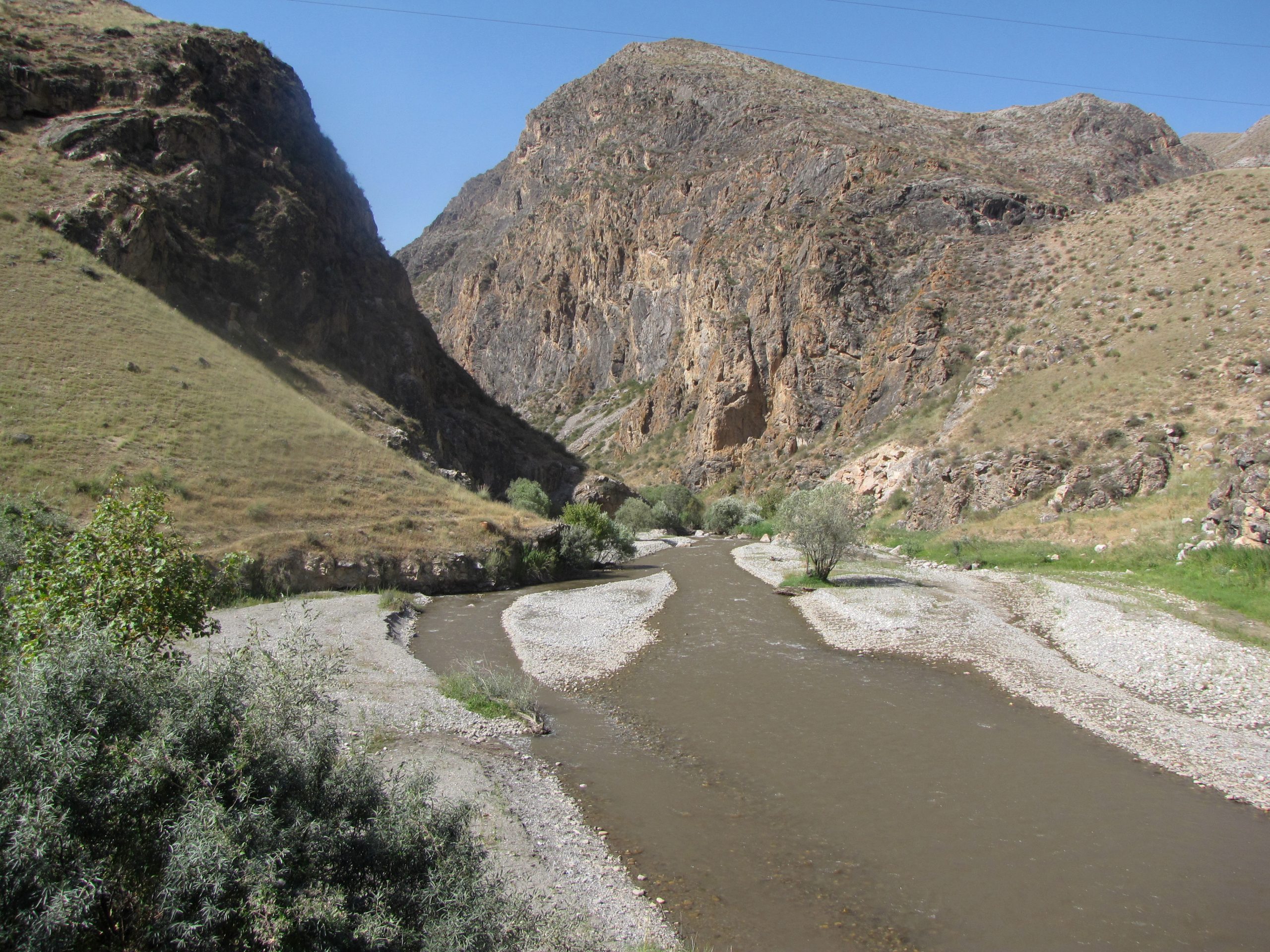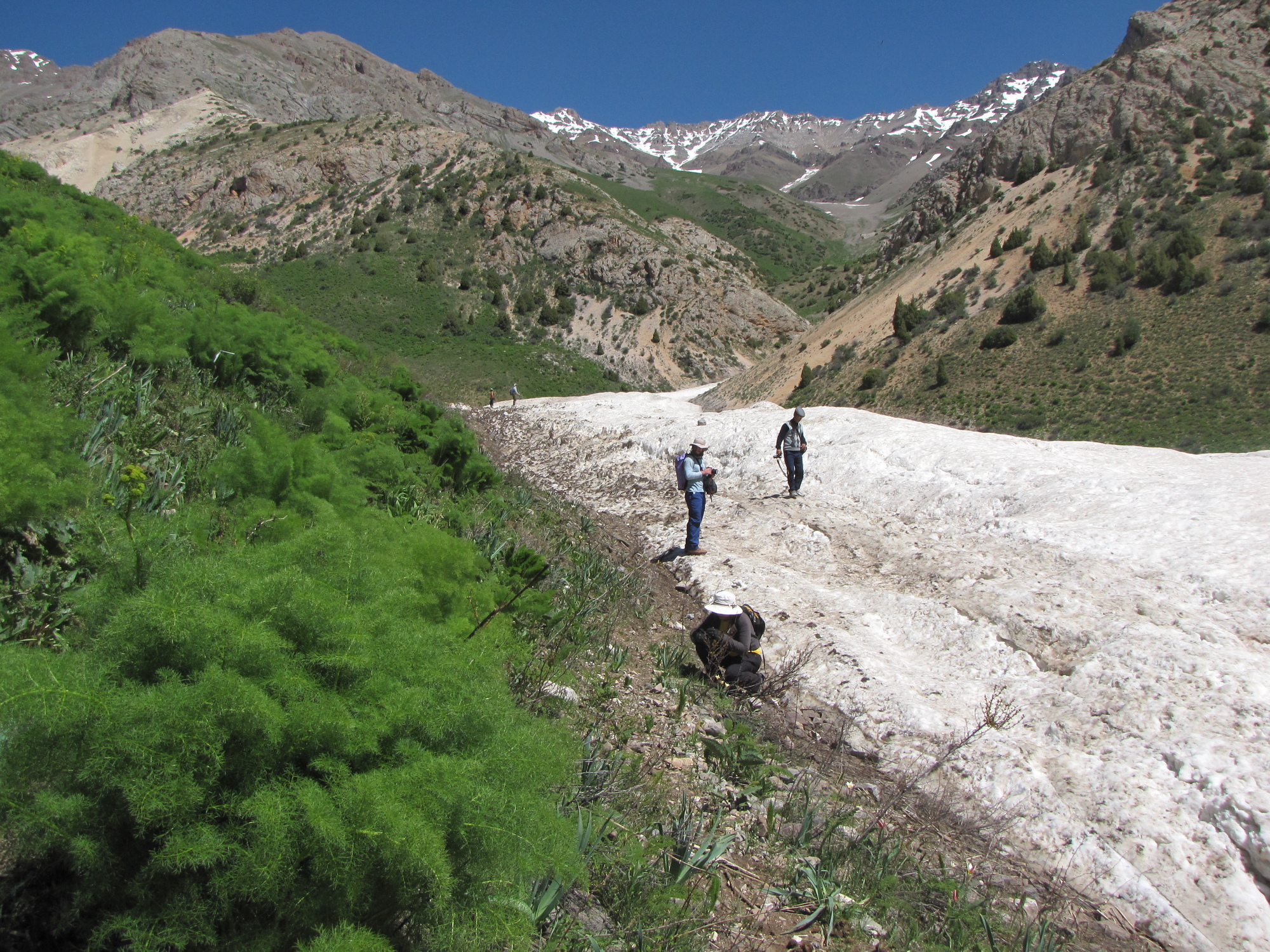Journey to the country of Zheztyrmak
One of the modern researchers of Central Asia, scientist, historian, speleologist Valentin Ogudin, for the first time touched upon the topic of the mysterious Bigfoot or, as the locals call him, Zhestermak. In one of his travels, he explored the Bigfoot phenomenon: The unimaginative mountainous “country of zheztyrmaks” (wild people) is located in Central Asia in Kyrgyzstan in the southwest of the Inner Tien Shan. From the west, its natural border is the Ferghana Range, from the north and east, the country is surrounded by the Kokerim-Too Range. The waters of the rivers flowing south from the slopes of the mountains irrigate the vast Toguz-Toroo valley. “I conducted three speleological expeditions in the areas adjacent to Kyokirim, collecting various information about him along the way. The first attempt to visit the area was made in the summer of 1976, but because of the rains, the group was forced to retreat, not even halfway through. The second attempt, made in 1983, was successful. Perhaps we were just lucky. The year turned out to be a little snowy and the water level in the rivers was unusually low. Despite the bad weather, constant rain and snow, the group managed to walk the entire main canyon of Kyokirima and reach the village of Kazarman. The next trip, undertaken in 1988 to survey the side canyons of the Kyokirima, was generally unsuccessful. The group hardly entered the area, and after staying there for only three days, they left it in a depressed state, unable to withstand the aggression from the natural environment. I think that we were given to understand what feelings nature experiences when a person presses on it just as uncontrollably.
In this expedition, we propose to continue researching the Bigfoot phenomenon. The area to be explored is wild and difficult to access. Therefore, the purpose of this expedition is not to find and see Bigfoot, but also to explore the wild unknown mountain region of the Tien Shan.
The only two local guides and some members of previous expeditions are ready to continue their explorations in such a wild and mysterious place.
* * *
This is how Valentin Ogudin describes this area: It all started in 1975 on the banks of the Kuraves River (North-East Fergana). A resident of the village of Avgandala, the shepherd Saipitdin Turdukulov told stories of the surrounding mountains.
“… From here, three days’ journey away, there are the Kyokirim-Too mountains, and in them there are two gorges Chon-Kanarchuu and Kichi-Kanarchuu. None of us have been there for a long time. Just climbing up the valley is dangerous. It has a saz (marshland) where small red flies are found. If three or four flies bite a person, he will get sick and die. It is difficult to detour through the passes in a long way, in some places even horses “stumble”, and there are no people nearby … The gorge of the Chon-Kanarchuu River, along the bottom is completely overgrown with blackberries and shrubs, and along the slopes – with forest. Wild goats, wild boars, bears, leopards are found in this gorge. There is a scary place, all the time, it seems that someone is looking at you.
All the animals from our mountains went to Chon-Kanarcha. It’s quiet there. The wild man went there too. In Kyrgyz, his name is Zheztyrmak. There are two species of them in Chon-Kanarchuu. One is big, he does not go down to the river, the other is small, he walks along the river. (Here Saipitdin showed how the zheztyrmak walks. He stood up, bent his knees, lowered his shoulders and covered his face with his hands). Zheztyrmak looks like a person, only very hairy. When he meets someone, he screams loudly, grabs branches with his hands and twists them.
Twenty years ago, hunters killed a female zheztyrmak in Chon-Kanarchu. The hunters had a taigan (a breed of dog – the Kyrgyz hound) with them, which barked at night, scaring away wild people. Once a stump was placed in a clearing, a chapan (quilted robe) was thrown over it, and the taigan was tightly tied, plugging his ears with cotton wool. Zheztyrmak came out of the bushes, came closer, bent down, jumped and grabbed the robe with his claws. The hunters fired at once, the zheztyrmak screamed loudly and rushed to run. Having untied the taigan, the hunters set off along the trail marked on the stones and grass with black blood. Soon they found a dead zheztyrmak. It was a female. One of the hunters cut off her hands. I saw these hands ten years ago in Suzak (Osh region). The old hunter showed them to us as proof of the correctness of his story. The hands look like a human, the fingers are slightly bent, the palm is clean, with thick yellowish-brown skin, the hair is short, reddish, like that of a foal, covering the wrist the tops of the fingers with large claws. The old man who kept these hands died two years ago… And there is a cave at the confluence of the Kekirim and Baidamtal rivers. Zheztyrmak lives in it … “
* * *
It is quite understandable that having received such information, we all fired up to visit such an unusual mountainous area. In the spring of 1976, the group set off along the Kuraves River along the route proposed by Saipitdin. But we did not reach the area, because we got into heavy rains. I had to confine myself to collecting information among the shepherds.
What does “Chon-Kanarchuu” mean? Translated from the Kyrgyz, “Chon” means “big”, “kanar” – “bag”, allegorically – “no climb out hole”, “chuu” – has two meanings, the first is “noise, hubbub”, the second is “notoriety”. A young shepherd, whom we met on the Kichizinda River, tried to explain the origin of the name, distorting it as “kanychuu” – “who screams (makes noise)” … “This place is terrible,” he said. One hunter disappeared there once along with a horse. They searched for him, called him, but they never found him. It looks like you can still hear him screaming. In general, all this is fiction. I’ve been there three times and haven’t heard anything. The hunting is good there. From other shepherds, we heard that people do not live in Kyokirima, they do not graze cattle there, and the area is not popular either. Everyone mentioned the cave.
Returning to the city, we began to look for information about the area in the literature, but in vain. There were no descriptions. On the topographic map, the central part of the Kekirim mountains was shown without trails, with continuous canyons. The impression was created that on the map of Central Asia, quite unexpectedly, a “blank spot” was discovered. This phenomenon is, generally speaking, understandable. Before the revolution, the area was mapped according to interrogation information, and in our time – with the help of aerial photography. All expeditions passed by, striving for the Pamirs or the Central Tien Shan. Geologists, as it turned out later, worked in 1934 only in the right component of the Kekirim River – the Keklik-Too River. Shepherds do not go here because of the lack of pastures. There are hunters, because there are an unprecedented number of animals, a real hunting paradise. But it is very difficult to move along the gorges, their relief is so rugged that this is reflected in the name – Kyokirim-Too, which means “Green tangle of mountains” in Kyrgyz.
It is quite understandable that there may be rarely visited places in the mountains. There are few of them in the Pamirs and Tien Shan. But who is this zheztyrmak? After all, many shepherds believe in its existence. And not only in the Kyokirima area there are stories about a wild man. Among the Kyrgyz, he is known under the name “zheztyrmak” – “copper claws”, literally “mountain witch”, among the Tajiks “gulbiyaban” – “man – ghoul (demon)”, among the Pamirs – “kishikiyik” – “man – mountain goat” name the spirit, the guardian of the area and the mountain goats that live in it; the name “almasty” is widespread – a demonic creature in the form of a woman, etc. The names of his closest relatives: tutek – the personification of mountain sickness (hypoxia), muzayak (ice foot) – a spirit that lives on glaciers.
The Tibetans believe that the wild (snow) man lives where the leopard and wild yak are found (recall that the Kyrgyz consider Kokirim the last refuge of snow leopards and zheztyrmak). These representations are depicted on a tanka (Buddhist icon) depicting Dalha – deities patronizing people and protecting them from enemies. On the icon, below the figure of the eldest of the nine Dalha brothers, one can see images of two snow people covered with dark brown and black wool. Below, on the left, a feline predator is depicted: a tiger or a leopard, and on the right, a wild yak or haynyk (a cross between a yak and a cow). All this trinity – a wild man, a feline predator and a wild animal are sabdaks – the guardians of the area, included in the retinue of Dalha.
The area of life of the snow leopard is currently located in the zone of non-residential highlands, although earlier it also covered residential highlands (regions of summer pastures). According to the ideas of shepherds and hunters, the habitat zone united two “snow species” – the snow leopard and the snowman, although the latter was related to the highlands only during periods of migration, and preferred to lead a twilight-night lifestyle in more diverse landscapes of high-altitude belts up to the floodplain thickets of the plains . Analysis of interrogation information, produced by B.F. Porshnev, showed that large individuals prefer to stay in the near-glacial zones, and smaller ones in low mountains along the banks of rivers. This statement made Saipitdin’s report about two types of zheztermaks unexpectedly interesting: “one is large, it does not go down to the river, the other is small, it walks along the river.”
With the hands of a shot female zheztyrmak, the situation is no less complicated. Similar relics have previously been discovered by other researchers. But, as a rule, they turned out to be the paws of a fox, a bear, or some other animal. It is possible that before the shot the hunter saw some unusual creature. No wonder they say about Zheztyrmak that he is a werewolf. Even the hand of an animal from the hominid family, stored in one of the Tibetan monasteries, is not direct evidence of the existence of the Bigfoot. There is an instructive example for this. Upon careful analysis, the Yeti scalps taken by E. Hillary to England turned out to be skillful forgeries, albeit old ones.
Mentions about the caves in Kokerim and the likelihood of finding remains or traces of the life activity of the Zheztyrmaks in them guided us to organize a new expedition. In 1983, a combined group of speleologists from Tashkent, Fergana and Novosibirsk went to the Kyokirim mountains. This time the route ran up the Karasu River past the lake of the same name to the Kapkatash pass leading to the upper reaches of the Chon-Kanarchuu.
The shepherd, standing two kilometers from the pass, hospitably gave us tea and initiated us into the secrets of local geography. But when we started talking about zheztyrmak, he laughed: “He hasn’t been in these places for a long time, he left, he completely left.” And then he told another frightening story. They say that wild animals live beyond the pass, called chow by the local population. In appearance, they look like a dog or a jackal, but more insidious and meaner. They do not eat their prey, but kill it by drinking blood from it. Chows live in packs of 10-15 individuals, they go hunting at night, even attacking travelers. The shepherd himself did not see them, but heard the stories of hunters who hunted beyond the pass. Of course, we did not begin to dispel the beliefs of an elderly person, but among ourselves we recalled that the word “choo” is used by the Kyrgyz people to call a very rare animal – the red wolf. The fact that he was settled in Kekirima is not surprising, because according to the stories, “all the animals went there.” But they don’t drink blood, but they do it, evil dwarfs as tall as a 12-year-old child. Rare and mythical are often intertwined with each other in the most bizarre way.
The Kapkatash Pass (Kyrgyz “narrow rocky gorge”) is clamped on the sides by two peaks that crown the ridges going down. The “circus” of Kapkatasha is quite spacious, but the valley leading from it, and it is clearly visible, is narrow and winding, it rolls down between almost sheer slopes. Here is the place that we have been striving for so long, where the mysterious zheztyrmak lives.
One gets the impression that these mountains are completely unsystematic. Sheer chaos in the construction of the ridge creates great difficulties for travelers. Powerful snowfields cordoned off the pass and nearby slopes in a semicircle. Chon-Kanychuu and Kichi-Kanychuu originate from them. Only conventionally they can be called “big” and “small” rivers. They are about the same, swift and stormy, except that the first one is somewhat longer. From above it is perfectly visible.
We bypass the side of the snowfield hanging from the ridge and begin the descent from the pass. We stomp along the winding path for almost an hour until we reach the lower clearing. Usually hunters look for their prey within this place, which is why the trail leads here. Chon-Kanarchuu is almost completely covered by a snow tunnel, and only in the gullies you can see its water flow. The smaller “sister” of this river has in some places been freed from the snow-ice shell and is now ferociously buzzing on the rifts with foamy breakers. At the entrance to the gorges, the rivers merge, giving rise to a powerful Kyokirim, sometimes blocked by giant snow bridges (and this is in July!). The river occupies the entire space of the gorge, making it almost impassable. It is impossible to walk along the ridges of the spurs, they are so heavily indented. The slopes are steep and densely overgrown with grasses. There are no trails here. The contraction of space, the lurking danger, the complete uncertainty of the future, cause a nagging feeling of anxiety. The impression is as if I got into a very beautiful, but deep jar, from which I will never get out. With a roar and force, the stream flies under the torn edges of snow bridges and disappears under their many meters thick. If you slide into it, you will die instantly.
You have to go to the new bridge over the water, either along the “living loose” (a random pile of large boulders and small stones that are ready to go underfoot at any moment), or along a grassy slope, where, due to the height of the grass, it is not visible where the foot steps. And how does zheztyrmak walk here? The road is exhausting. We often fall, with difficulty getting up under the load of a backpack.
Light rain drizzles at times, sometimes turning into snow. For the summer Kyokirima, this is a common occurrence. Indeed, its “bag” accumulates maximum precipitation in the southwest of the Inner Tien Shan. In winter and spring, the wind carries masses of snow across the Ferghana Range, which clog the Kyokirim canyons to the limit. The thickness of snowfields in some places reaches 30-50 meters. When the air warms up. Intensive melting occurs and the released water rushes down the riverbeds. The depth of rapid streams in the narrowing of the canyons reaches 5-7 meters in some places. The processes taking place in the area are extremely dynamic, which creates an extremely unfavorable and aggressive environment for human life. Nevertheless, the crests of the ridges and clearings in the floodplain, densely overgrown with grass exceeding human height (pronounced gigantism of plants), and numerous caves and grottoes serve as a reliable refuge for numerous large animals, primarily mountain goats, then bears and leopards. The complete absence of birds is striking. Despite the abundance of food, there are not even the ubiquitous alpine jackdaws and choughs, which can also be found in glacial zones at altitudes exceeding 5000 m above sea level. But there are an unprecedented number of flies and horseflies here. And, unfortunately, they are not at all afraid of humans!
The gorge sharply turns to the right, and we run into a “pressure”, which seems to be possible to overcome only by air. You have to descend into the icy water in all your outfit and make your way along the coast, holding on to stones and ledges of rocks. This mode of transportation is common in Kökerim. In canyons, constantly, tens or hundreds of meters, you have to wade knee-deep or waist-deep in water, clinging to the shore, moving from island to island or from coast to coast. Wandering on the water is perhaps easier than on the slopes. The road is smoother. Where there is no ford, one has to climb the rocks, using special equipment for this. The speed of movement is very low, sometimes in 2-3 hours you can overcome only a few hundred meters.
Along the way, with overcoming difficulties, we are engaged in the examination of numerous grottoes. As a rule, they are niche-shaped. Traces of living creatures are found only in one of them in the form of a pile of completely white bones. Their examination gave them absolutely nothing. The skulls were missing, and there were no bite marks on the bones. Being non-specialists, we could not distinguish the bones of a bear from the bones of a person, if they were there, and it was not possible to drag this whole pile to the city to anthropologists.
Thus, advancing gradually, we came to the very heart of Kyokirima. It turned out to be a narrow clearing in front of the confluence of the Kyokirima with Baidamtal. In the clearing, among the low grass, there were about a dozen giant birches. Each is more than two meters in diameter and up to twenty meters high. The largest and oldest birch was broken at the base and lay along the clearing like a fallen body. The base camp was set up in a clearing, finally dried up and regained some strength.
At night I had a dream. Eight or ten very old women, dressed in dark and white national costumes, carefully looked after one even older stately woman, who lay among them completely sick, enduring torment. The women asked for help. When I woke up, I realized that my dream was inspired by dryads of birches, because such ancient trees always have an animated beginning. It is no coincidence that centuries-old plane trees, elms and willows were revered as shrines in Central Asia. Rising, I went to the old broken birch and expressed sincere sympathy. There was nothing more I could do to help them under these conditions.
With the sunset, it becomes very quiet in the gorges, only the river makes noise, and, best of all, annoying flies disappear. A strange feeling of discomfort did not leave us. I completely lost my appetite. The expedition members, extroverts by nature, gradually fell into depression, introverts became more and more withdrawn into themselves. It’s time to get out of here. Voices seemed to be heard at night, sometimes it seemed that several people were talking. I recall the story of Sartai Isavaev, an elderly shepherd from the village of Ozgorush:
“When I was younger, I drove flocks over the Kapka pass. Once with a friend we went hunting to the river Chon-Kanarchu. It was in autumn, around 1970, when the first snow fell in the mountains, and so that the horses would not get stuck, we climbed higher, almost to the very crest of the mountains, from where the snow blows away. Hunted, began to return home. And then they got into some unfamiliar valley. Rather, we saw her from above. She was very narrow. The rocks on the opposite side from us were completely sheer, like a wall. And only in one place – a small area on which trees grew. We made a halt. After eating, my friend dozed off, and I prepared the horses for the transition. Suddenly I thought I heard voices from the platform. Like a man and a woman talking. I was taken aback: where can people come from, if the site is so high from the bottom of the valley, and 30 meters of a sheer wall to the crest of the ridge. Woke up a friend. He listened and heard the voices too. After this incident, I no longer go to those places. And I don’t advise you.”
For several days, we examined the heart of Kyokirima. In the grotto, which was mentioned by many shepherds, considering it the dwelling of the Zheztyrmaks, nothing was found. The journey to the inhabited places took several more days. Again, we walked on the water for a long time, wishing only one thing – to get out of the canyon as soon as possible. Nothing unusual happened around us, except for an unexpected find – a fresh carcass of a five-year-old goat, lying in the water and without any visible damage.
It seemed that the expeditions did not bring any results. But only later, in the city, we realized. That everything our informants were talking about so insistently came down to only one thing: the Kyokirima zone provokes a special state of consciousness. It was experienced by all the hunters who were there, and we also experienced it. The nature of the origin of a specific phenomenon was unexpectedly well explained by Olmanta Omonov, an elder of the Tulegen clan, who lives in the Kundalik village on the Akbuura River (eastern Fergana). He formulated that “… zheztyrmak is rare and not for every person. This happens once every 10 years. But this person must be either tired, or hungry, or just woken up. Then he can suddenly see a zheztyrmak. Often, the latter takes the form of his relative or good friend. Zheztyrmak lures a person into an impassable place or spins him. At best, a person will suddenly wake up and wonder how he got here. At worst, they will die. Zheztyrmak is most often in the evening or early in the morning. The favorite habitats of zheztyrmak are impassable or hard-to-reach gorges, caves, and thickets.
The definitions of the elder were supplemented by Dzhumamat Musaev, a resident of the village of Darautkurgan (Alai Valley), who was once a driver on an expedition of the USSR Academy of Sciences, which was looking for a “snow” man in the Pamirs in 1958: “... there is a wild man everywhere. When you walk alone in the mountains, the wild man is always behind, we hear him. One has only to turn around, he becomes like juniper, like a stone … “.
So, zheztyrmak is the spirit of an altered state of consciousness. Normal, mentally healthy people begin to hallucinate in reality under the influence of overwork and environmental aggression. Under the circumstances, everyone can enter this state, since it is inherent in human nature. At the same time, the subconscious produces video-auditory images, often from the very depths, “materializing” ancient atavistic fears. In this context, all cases of strange phenomena fall into place and become explainable. True, such an approach completely destroys the idea of \u200b\u200bthe real existence of a wild person. But maybe he lives his own independent life, not paying attention to the hustle and bustle of people.
To make sure of this, and at the same time to explore the caves, which were told so much by local hunters, as well as local wildlife, we organize an expedition to the “country of Zhestermak” in the little-studied region of the Inner Tien Shan.
Expedition goals:
- – Exploration of the wild, unknown region of the Tien Shan,
– Exploration of caves and grottoes
– Speleo-biological research
– Exploration of wild natural phenomena in the Kekerim Valley,
– Watching wild animals, birds, insects,
– Photo and video shooting, etc.
We are going to explore one of the wildest and most remote areas of the Tien Shan. We want to plunge into the wild, feel like explorers and discoverers.
Those wishing to take part in the expedition can contact us at: info@geoexplorersclub.com
PROGRAM ROUTE AND LOGISTICS THE TERMS OF PARTICIPATION
Our email: info@geoexplorersclub.com

